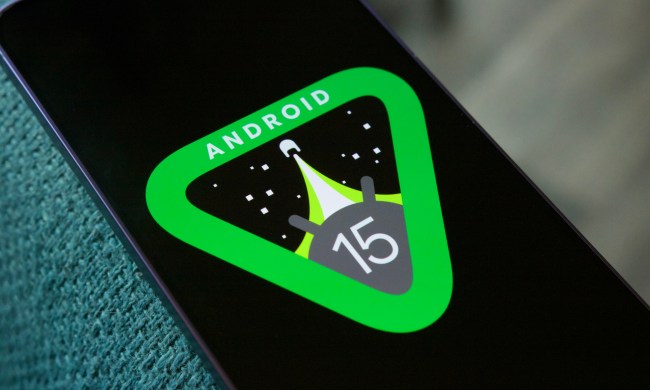The technology industry has been speculating that Internet titan Google was looking at launching its own mobile devices, giving the company’s long-standing interest in all things mobile. The last major swath of rumors turned out to be centered on Android, Google mobile operating system, rather than on any Google-branded mobile device. This weekend, the rumor mill swung back into full force as Google employees began posting notices to social networking services that they were testing a new Android-based device for the company…and it didn’t take long for the first pictures to appear. Google quickly confirmed a new device was out in the field for testing, but revealed little else about the device or the company’s mobile plans.

“We recently came up with the concept of a mobile lab, which is a device that combines innovative hardware from a partner with software that runs on Android to experiment with new mobile features and capabilities, and we shared this device with Google employees across the globe,” wrote Google VP for product management Mario Queiroz in a blog post. Queiroz also referred to employees’ use of the device as “dogfooding,” a process wherein company use their own products (“eating their own dogfood”) to see how they perform in the real world.
The Wall Street Journal, meanwhile, cites unnamed “people familiar with the matter” claiming Google plans to launch its own mobile phone directly to consumers without a carrier partner “as soon as next year.” The device would be unlocked and running version 2.1 of Google’s Android mobile operating system.
The device in Google employees’ hands, variously dubbed the “Nexus One,” is apparently manufactured by HTC. The device sports a trackball for navigation, an OLED display, 802.11b/g Wi-Fi networking, Bluetooth 2.1, and a microSD slot for removable storage. Notably missing compared to the much-hyped Droid: a QWERTY keypad.
Industry watchers are mixed on the idea of Google launching its own device. On one hand, doing so gives the company an Apple-like opportunity to manage both the hardware and software side of a mobile platform. On the other hand, going into direct competition with it’s own Android partners may sap momentum from the Android platform…just as it’s starting to take off.
[Photo credit: Cory O’Brien via Twitter.]

